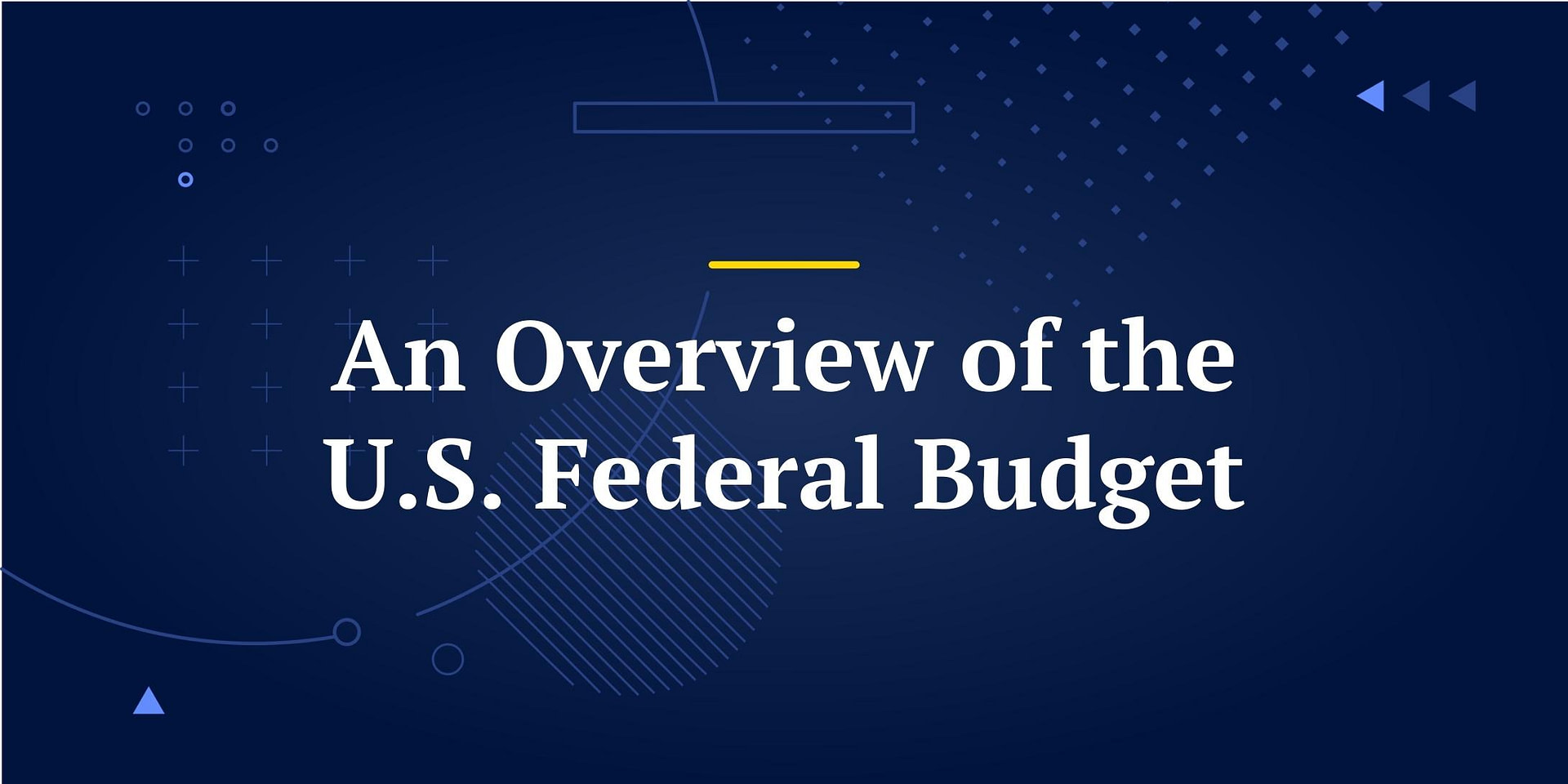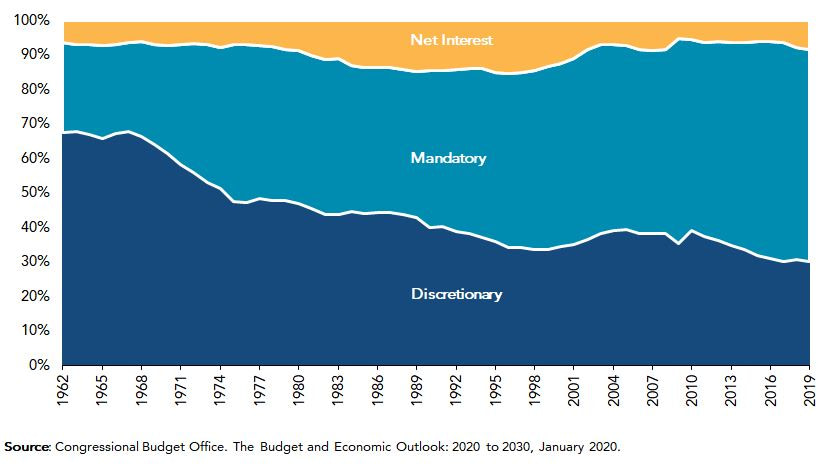The U.S federal budget is a breakdown of the way the government spends our money. It’s a financial representation of the government’s priorities.
Last May, President Joe Biden announced the proposed budget for fiscal 2022, which runs between October 1, 2021, and September 30, 2022. The budget proposal is executed under the guidance of the White House Office of Management and Budget (OMB). The governing body defines the government’s financial necessities for the fiscal year, and Congress reviews the budget before passing it.
Government spending has risen consistently over the years. In 2020, the federal budget rose to $6.55 trillion, driven by federal benefits launched by the government to combat the COVID-19 pandemic.
Total outlays of the U.S. government in fiscal years 2000 to 2027
The spending increase seems radical, but if we look at spending as a percentage of GDP, the trend was relatively consistent up until the COVID-19 pandemic. Spending grew at roughly the same rate as the economy.
Federal outlays as a share of GDP over time
So, what does the federal budget consist of, and where do all the funds finally go?
Types of Federal Spending
The U.S. Treasury splits federal spending into three categories: discretionary spending, non-discretionary or mandatory spending, and interest on the national debt.
Federal spending fiscal year 2021
As you can see from the chart above, mandatory spending accounts for a large majority of federal government expenditures. The chart below shows that mandatory spending has increased significantly over time.
What is Mandatory or Non-Discretionary Spending?
Mandatory or non-discretionary spending is spending that is required by law. The government cannot raise or lower this spending.
Major don-discretionary spending programs include Medicare, Social Security, Medicaid, and unemployment compensation.
In 2020, due to COVID-19-related relief programs, mandatory spending stood at $5.2 trillion, significantly higher compared to historical figures. The government ramped up spending to offset rising unemployment rates and provide liquidity to millions of residents.
The government does not set aside a budget for Social Security programs. Instead, it assists those eligible for the payout each year and covers these costs, whatever the amount.
What is Discretionary Spending?
Discretionary spending is allocated each year by the U.S. Congress through an appropriations process. Each appropriations sub-committee is authorized to propose funding for a particular federal government sector.
In 2020, the U.S. Congress set aside $1.6 trillion in discretionary spending for fiscal 2021. Military spending was the largest category, accounting for 46.5% or $752.06 billion of total discretionary spending. In the past years, spending on the country’s military has surpassed 50% of total discretionary spending several times.
The other top categories in discretionary spending include:
- Education: 9.82% or $158.7 billion
- Health: 9.12% or $147.38 billion
- Veteran’s Benefits: 6.48% or $104.78 billion
Discretionary spending is proposed by the executive branch and approved by Congress, and often becomes politically contentious.
A Look at the Federal Budget for Fiscal 2022
For fiscal 2022, President Biden has proposed to spend close to $6 trillion, which accounts for 23.5% of the country’s GDP (gross domestic product). Around $4.8 trillion will, however, be financed by federal revenues, and the rest will be funded via borrowing. In addition, the budget proposal disclosed that non-defense discretionary spending would increase, in contrast to the previous decade.
Total discretionary and non-discretionary spending account for over 90% of the federal budget. The interest on debt makes up for the rest of the total spending. In fiscal 2021, when the federal budget stood at $7 trillion, interest on debt accounted for 4.27% or $303 billion of total spending.
Let’s now see what will drive federal spending in fiscal 2022.
Health Insurance
There are four health insurance programs funded by the U.S. government. These include Medicare, the CHIP (Children’s Health Insurance Program), the ACA (Affordable Care Act), and Medicaid.
The spending for the four programs is forecast at $1.4 trillion or 25% of the total budget. Further, spending on the Medicare program might stand at $733 billion, accounting for almost 50% of total health insurance costs. Medicare provides coverage to 80 million residents, and Medicare spending is expected to increase significantly as the population ages.
Social Security
In fiscal 2022, Social Security may account for $1.2 trillion or 21% of the federal budget. The average monthly retirement benefit of $1,538 will be paid to 49 million retired workers. It will also cover benefits offered to three million spouses and children of the retired workforce, nine million disabled workers (and dependents), and six million surviving dependents of deceased workers.
Like Medicare, Social Security outlays will inevitably increase as the baby boom generation gets older.
Defense
The third largest expense on the U.S. government’s balance sheet is allocated to defense. In fiscal 2022, around 13% of the federal budget, amounting to $768 billion, will be poured to shore up the country’s military capabilities.
The three largest categories account for 59% of the total U.S. federal budget in fiscal 2022.
Economic Security Programs
In addition to health insurance and Social Security, the U.S. has allocated 11% or $665 billion of the budget to help families and individuals facing financial hardships. These economic security programs include Earned Income Tax Credit and Child Tax Credit, which provide cash payments to eligible residents.
In-kind assistance includes school meals, child care assistance, the Supplemental Nutrition Assistance Program, and low-income housing assistance, among others. The economic security programs lifted 34 million individuals, including six million children, above the poverty line in 2019.
Veteran’s Benefits
In 2022, 7% or $420 billion is allocated to provide benefits to military veterans. Approximately 90% of these benefits are disability or medical care payments. There are about 19 million veterans in the U.S. military, of which 2.2 million are retired and earn pensions or survivor benefits each month.
Interest on Debt
The amount borrowed by the federal government comes at a cost, as the debt needs to be serviced by making regular interest payments. The net federal debt is forecast to touch $21.7 trillion by the end of fiscal 2022. Interest payments will rise to almost $400 billion or about 6.8% of the total budget.
These six categories account for 3/4th of total spending by the U.S. government. The rest of the funds are distributed towards education, infrastructure (building roads, bridges, airports, etc.), and maintaining the natural resources of the nation.
A small portion of federal spending supports several other public services. For instance, around 1% of the budget is allocated towards international programs such as offering financial or humanitarian aid to countries or maintaining overseas government offices like consulates and embassies.



